People
Artists and Curators Remember the ‘Brave’ Sculptor Phyllida Barlow, Whose Assemblages Challenged Space, Perspective, and Gravity
The British sculptor has died at age 78.
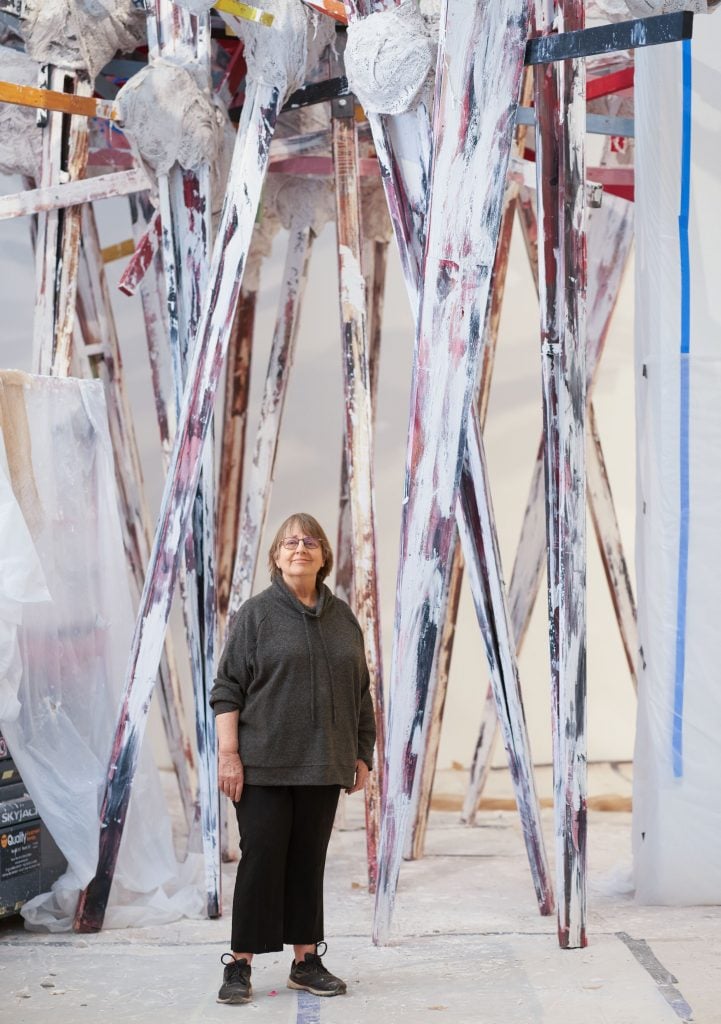
The British sculptor has died at age 78.

Kate Brown

The British sculptor Phyllida Barlow has died at age 78. The London-based artist was known for boldly transforming inexpensive materials like cardboard, fabric, cement, and plywood, into breathtaking and colossal assemblages that renegotiated our sense of space. These seemingly boundless works, which are often colorful and large in scale, teetered between a welcoming dreaminess and a foreboding sense of precariousness.
After decades of working and teaching in the U.K., in which she was influential to a generation of artists including Tacita Dean, Douglas Gordon, and Rachel Whiteread, one-time students of hers, Barlow finally achieved international fame in the 2010s, becoming a late-career star. She exhibited at the Venice Biennale in 2017, taking over the British Pavilion. Frances Morris, director of Tate Modern described the sculptor as a “towering artist.”
She is survived by her husband husband Fabian Peake and their five children.
“Barlow’s all-engulfing sculptures question the limitless potentials of the versatile medium,” said Katy Hessel, author of The Story of Art Without Men. “She takes influence from her surroundings—and in turn, challenges ours—and her works distort all sense of perspective, challenge sculptural conventions and ideas of modern monuments, and make us experience the medium in ways that no artist had done before.”
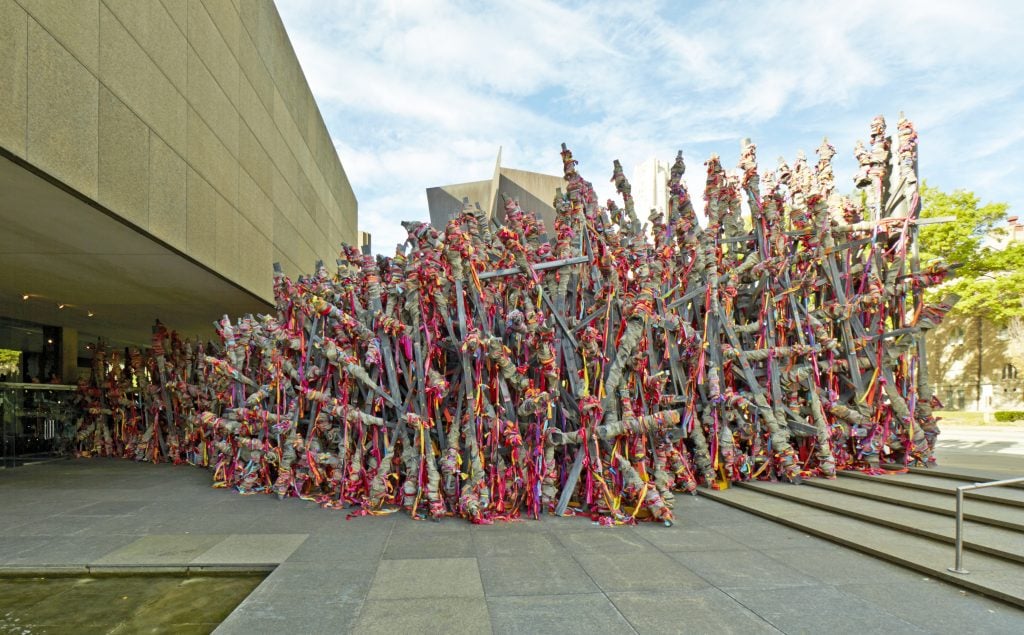
Phyllida Barlow TIP (2013). Installation view, Carnegie Museum of Art, 2013 Carnegie International, Pittsburgh PA, 2014. © Phyllida Barlow. Photo: Greenhouse Media
Born in Newcastle on Tyne in 1944, Barlow often spoke about how postwar U.K., and the physical destruction of World War II, had a major influence on her work. Dilapidated structures, entropy, and orchestrated chaos seem to channel in Barlow’s massive, heavy monuments that seem to be, in part, informed by mangled landscapes.
Barlow experienced a meteoric rise in fame after she retired from Slade School of Fine Art, where she taught for decades, in 2009. One major first light shone on her when artist Nairy Baghramian wrote about her for Artforum after coming across a rare publication of Barlow’s at Studio Voltaire in London. “A short time later I visited Phyllida in her empty studio, then in the house where she lived with her large family in London,” Baghramian recalled in an email. “This was before she had the opportunity to store her voluminous works or to show them in large exhibitions.”
The younger artist recalled being asked by the art magazine to write about an exhibition of her choosing—she chose to write about a “missing exhibition” that did not yet exist, that of “Phyllida’s expansive works.”
Those shows would soon become realities. Curator Hans Ulrich Obrist then invited Baghramian and Barlow to exhibition in a two-person show at the Serpentine Gallery in 2010. “Phyllida’s unconditional commitment and passion in the early years of the prize honored and advanced the medium of sculpture,” Baghramian added. “Full of appreciative love and in her memory, I will continue this task, knowing what a far-reaching influence she has and has had on my and subsequent generations of artists.”
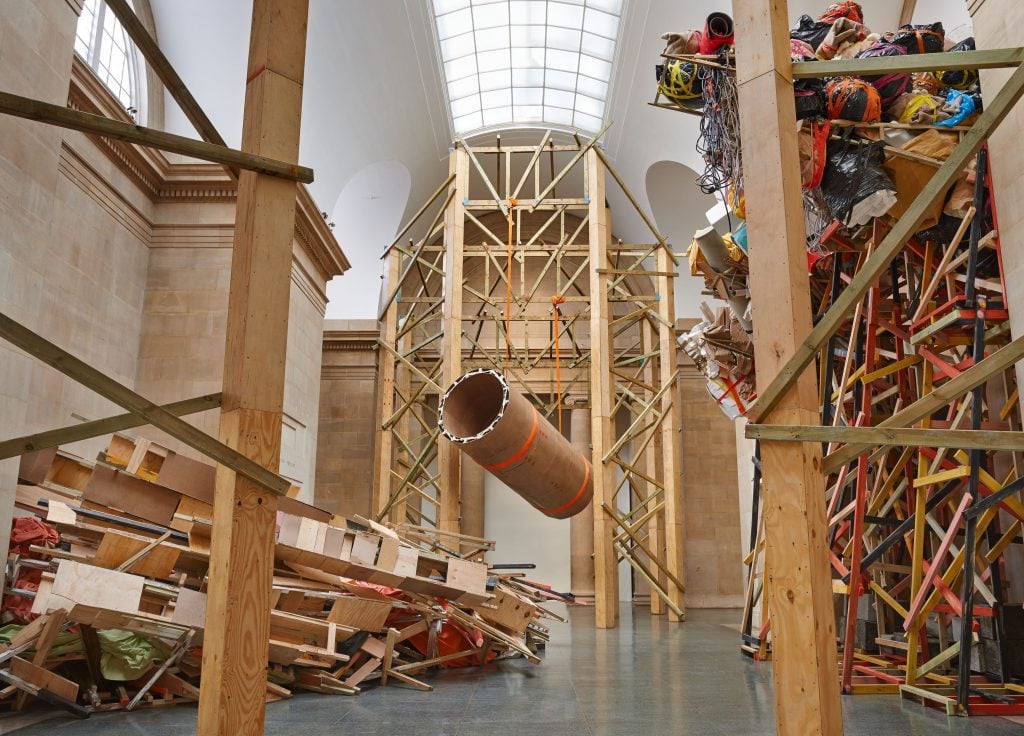
Phyllida Barlow, dock. Duveen Commission, Tate Britain, London, U.K., 2014 © Phyllida Barlow. Courtesy the artist and Hauser & Wirth. Photo: Alex Delfanne
2010 was a tipping year—she had her first solo at the New Museum in New York. Before the year was out, Iwan Wirth of Hauser & Wirth came knocking at her door, eager to work with her. As Charlotte Higgins described in a piece ahead of her presentation at the British pavilion at the Venice Biennale in 2017, the representation, support, and cash advances from such a formidable dealer as Wirth allowed Barlow to scale up her ambitious sculptural visions.
“Phyllida Barlow was a cherished friend as well as a visionary artist,” said Phyllida’s dealer, Iwan Wirth, president of Hauser & Wirth. “Her ideas, knowledge, experience and wry humor were always shared with the most extraordinary warmth. Her generosity of spirit extended through her art, her writings, and her many years of teaching and mentorship. A truly thoughtful and companionable human being, Phyllida was a guiding light and inspiration to so many. Her loss will be felt deeply by all who knew and collaborated with her in the art community and beyond.”
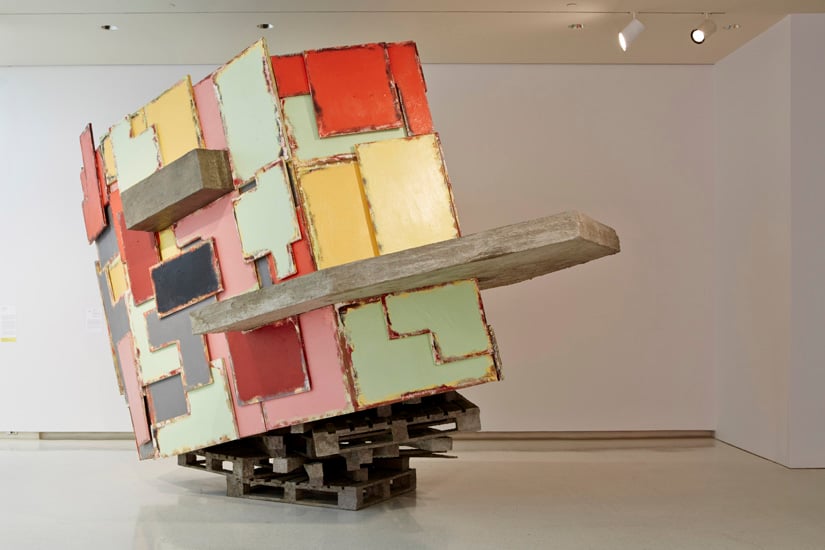
Installation view, Phyllida Barlow, scree. Des Moines Art Center, Des Moines, 2013. © Phyllida Barlow. Courtesy the artist and Hauser & Wirth. Photo: Paul Crosby
Her 2017 work at the Venice Biennale, called Folly, eclipsed the historic venue with massive looming bauble-like sculptures on the outside of the building; inside, visitors walked through a dense constellation of grey trunk-like towers, and colorful and slightly intimidating protruding geometric sculptures. Using industrial material that is widely available, Barlow’s arrangements often conjured otherworldly takes on the dimensions of natural world, evoking the humbling sense of walking within deep forests, in canyons, or under overhanging cliffs.
“The need to be entertained in art is a big issue. Part of the visual arts are about slowing down our ability to look and experience. That’s not always entirely visual,” Barlow said in an interview with The Great Women Artists podcast. “For a public to become interested in sculpture, it requires a different way of looking.”
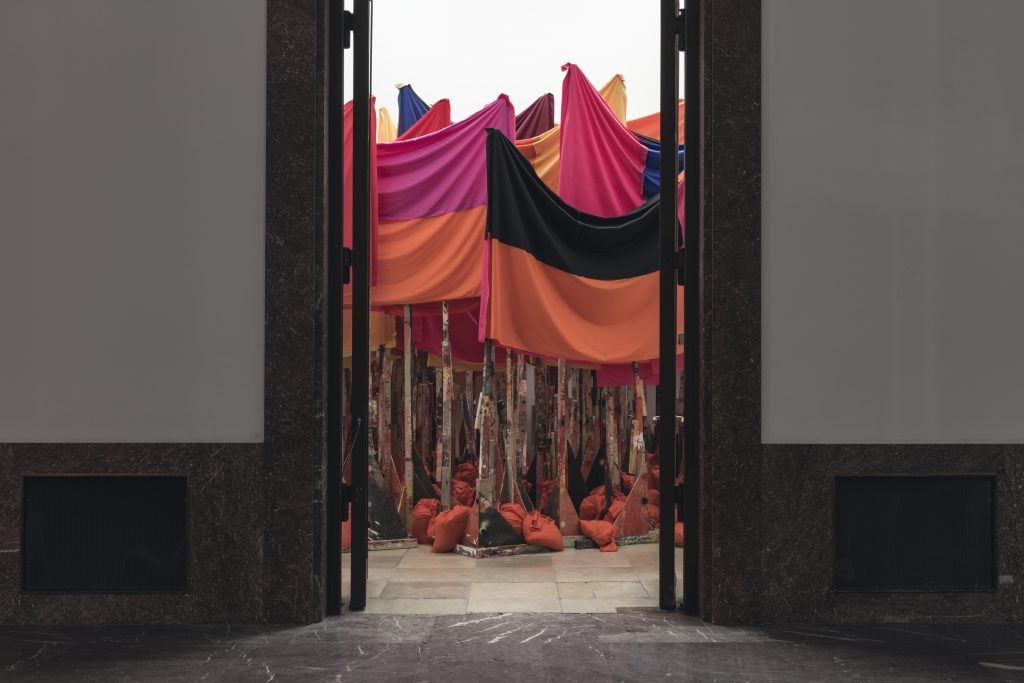
Phyllida Barlow untitled: 100banners (2015). Installation view, “Phyllida Barlow. frontier,” Haus der Kunst, Munich, Germany, 2021. © Phyllida Barlow
Given the ongoing influence of her early experiences of the effects of war, the tenor of Barlow’s sculptures met their spatial match at the Haus der Kunst in Munich, an art museum that had been inaugurated by Hitler in 1933. Her monumental yet tactile sculptures were able to offer a convincing foil to the vast marbled halls of Haus der Kunst.
“Phyllida was brave. Brave and restless in her profoundly personal mission. She defined upcycling as a fundamental approach for the arts, and combining as a resource to engage with space,” Andrea Lissoni, director of the Haus der Kunst, wrote in an email. “Everyone learned: the building, to accept radical challenges by women artists; we as a team, to champion her restless commitment to her own mission; our public, to feel empowered by her braveness and her radically transformative art.”
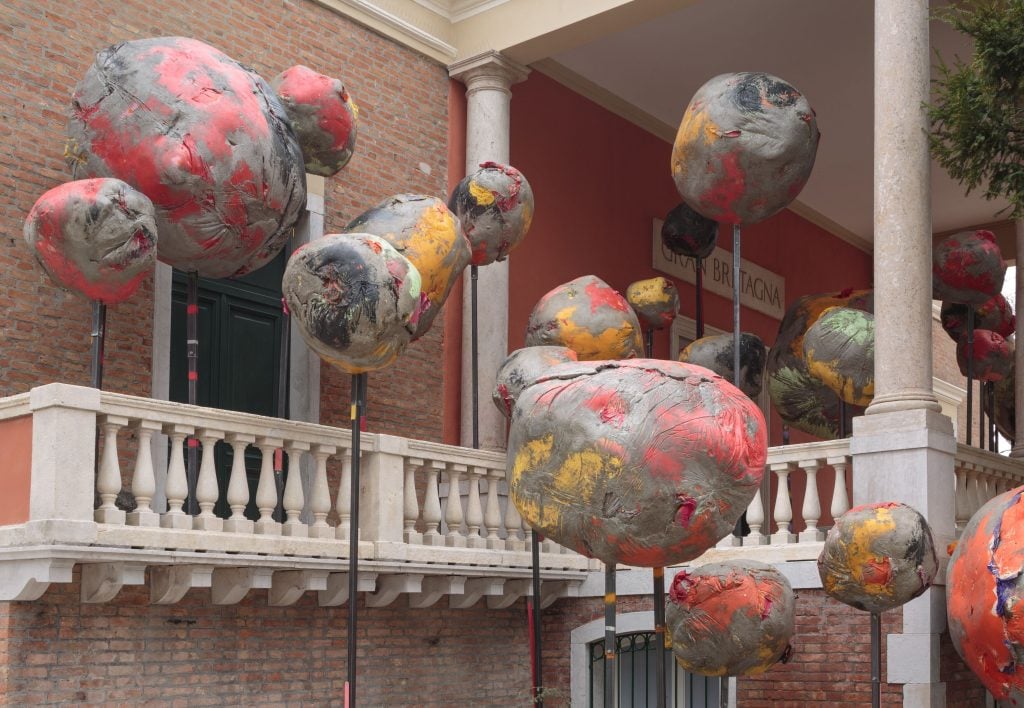
Installation view, folly. British Pavilion, 57th Venice Biennale, Italy, 2017. Courtesy the artist, Hauser & Wirth and British Council. © Phyllida Barlow. Photo: Ruth Clark
One of the last shows Barlow oversaw is on view until March 19 at the Sprengel Museum in Hannover. It consists of a large wooden assemblage in vivid colors that extends along the 7,500 square feet of the gallery. The work’s title, Breach, is in reference to the term that usually is used to describe the overstepping of a boundary.
“What a loss for the art world!” noted Reinhard Spieler, director of the museum. “Just a short while ago, as the winner of the Kurt Schwitters Prize 2022, she installed one of the most impressive works in the history of the Sprengel Museum Hannover. As a person as well as an artist, she captured the heart of our museum and we bow our heads in great gratitude to her. All of our sympathies go out to her family.”
“We are always assessing heights and depths and weather and other physical material things,” said Barlow in that recent interview. “Sculpture is inherently the world we live in.”
More Trending Stories: